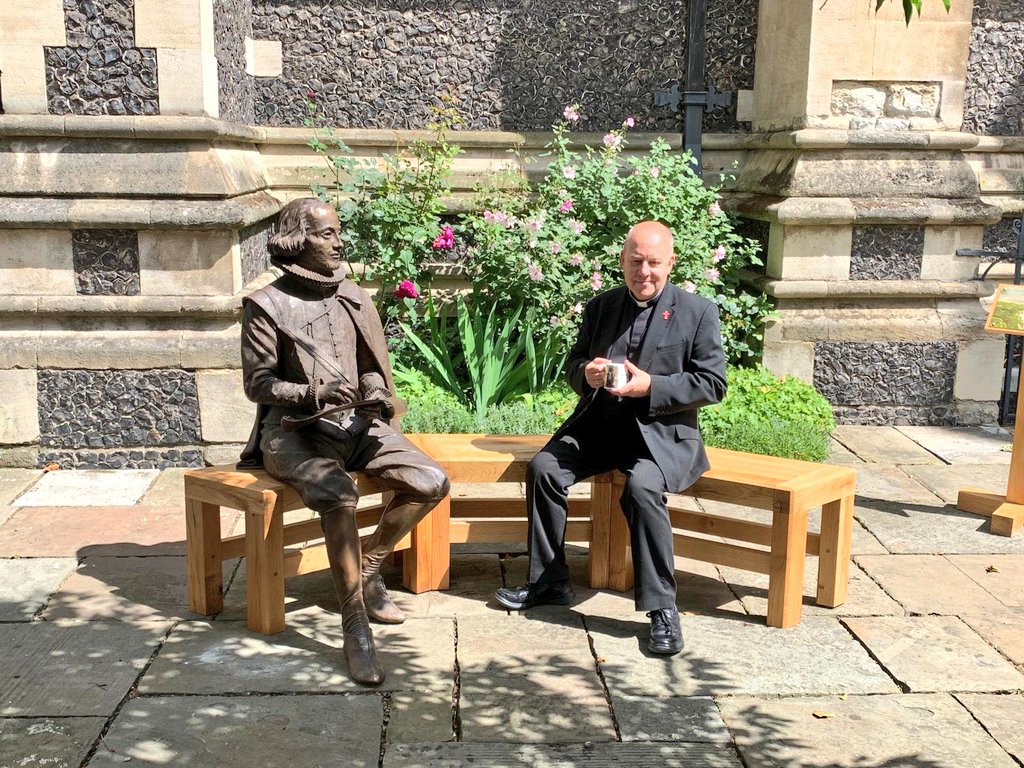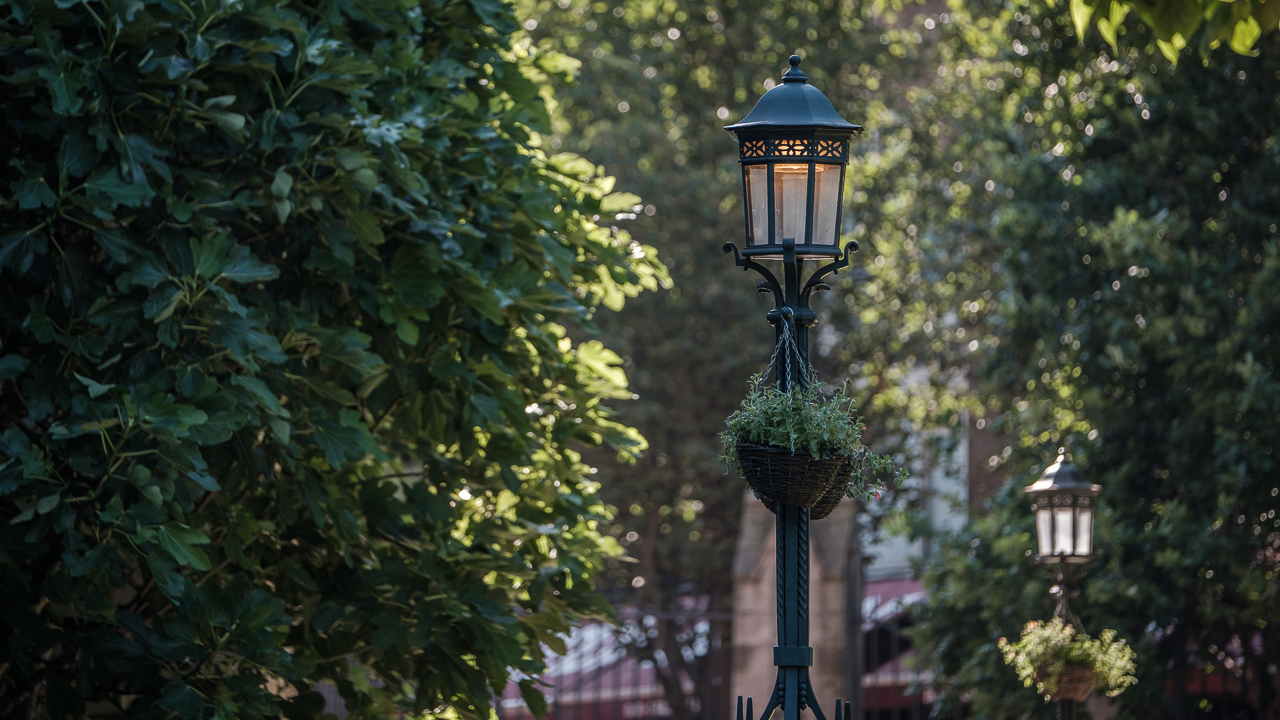The Cathedral Churchyard is an ancient burial ground and place of worship, a place of calm and peace in a busy urban setting, and a green space that is different from any other open space in the area
Churchyard
The Churchyard was restored in 2015 and planted with flowers and herbs with biblical and Shakespearean connections. During the summer months (June to Septgember) you can pick up one of our Shakespearean Botanical Trails, use this trail to walk round the Cathedral Churchyard and Herb Garden, discovering a selection of plants that we grow to celebrate the life of England’s greatest playwright.
O, mickle is the powerful grace that lies
In herbs, plants, stones, and their true qualities:
For nought so vile that on the earth doth live
But to the earth some special good doth give,
Nor aught so good but strain’d from that fair useRomeo and Juliet, Act II Scene III
You can also see our life size bronze statue of William Shakespeare which was commissioned by The Theatre Courtyard Gallery, Shoreditch to mark their opening in Summer 2020.
Sculpted by acclaimed British sculptor Raphael Maklouf who was assisted by Hayley Gibbs this statue represents Shakespeare in his early thirties sitting on a bench.
When you visit the Cathedral you can sit alongside for a while, and muse with the Bard. Shakespeare would have sat around this area when he was a resident in the parish. So come along to Southwark Cathedral and enjoy your moment and remember his wisdom, ‘we shall ne'er be younger’. If you are taking photographs of yourself with the Bard please post them on Instagram or Twitter with the #withthebard
The Dean, the Very Reverend Andrew Nunn enjoying a chat with the great man.

Please note, as part of the restoration of the Churchyard, it is not permitted to consume food and drink in the grounds as we strive to ensure this space retains its distinctive atmosphere of calm and reflection in this busy part of London.

Herb Garden
The Augustinian Priory of St Mary Overie was founded on this site in 1106.
In the year 1212 a great fire swept through Southwark destroying most of the priory and surrounding buildings. After the fire, the Augustinian Canons of St Mary Overie built a hospital at the priory gates and dedicated it to the martyred Archbishop of Canterbury, Thomas Becket who preached his last sermon in London at this church before travelling to Canterbury.
It was not until the 1871 that St Thomas’ Hospital moved to its present location in Lambeth opposite the Houses of Parliament.
This garden, built into the medieval foundations of the Bishop’s Chapel, where the Bishop of Winchester, Lancelot Andrewes, was laid to rest before being moved inside the Cathedral when the chapel was demolished in the 19th century represents aspects of a typical medieval monastic herb garden and commemorates our links with the hospital.
We are growing over fifty different kinds of herbs that the Canons of the Priory would have used to treat the sick, as well as for other uses such as strewing, fumigating, cooking and brewing.
Listed below is a small selection of herbs which you can see growing here today and which would have been used in medieval times at the Priory.
Strewing Herbs used for scattering on floors, insect repellent and room fragrance.
- Rosemary is associated with remembrance and was thrown into graves at funerals. Sprigs of Rosemary were burnt to be used as incense and strewn on church floors.
- Sweet Woodruff was often made into decorative garlands to decorate churches on St Barnabas' Day and on St Paul’s Day, and used as a strewing herb to freshen the air.
Culinary Herbs used in cooking.
- Lavender was used in cooking as flavouring and as an additive to stews, It was a popular plant in herb gardens because it attracted bees which were needed for pollination and for making honey.
- Mint has been culitvated from biblical times and was used in cooking and to produce camphor oil valued for its aroma. All varieties of mints were used in sauces and to add flavour to dishes.
Medicinal herbs used to treat the sick.
- Hyssop was mixed with wine and syrup and drunk as a remedy for catarrh or chest complaints.
- Feverfew was associated with reducing fevers and curing headaches and coughs.
- Good King Henry was known by the name of ‘All-Good’ as this was thought to cure all ills.
Dyeing herbs used to dye fabrics.
- Woad would be pulped and drained; any remaining residue was kneaded into balls and then dried, reduced to a powder from which the blue dye was produced.
Brewing herbs used to produce drinks such gruit, tonic and ale.
- Tradition maintained that Wormwood was ‘found on the path taken by the serpent in the Garden of Eden’ and that its bitter taste comes from this association with the Devil. Absinthe is made from this herb.
- Hops, used to brew beer and ale, could also be used to for dyeing and medicinal purposes.
The Chapter of Southwark Cathedral wish to thank the Herb Garret Museum for their assistance with this project.